Do you have a question about the Dell Inspiron 5000 Series and is the answer not in the manual?
Instructions for downloading PDF documentation files for the Inspiron 5000 series.
Information and download links for compiled HTML help files for the Inspiron 5000 series.
Explains how to install or reinstall Dell-provided drivers and utilities for Windows 2000.
Describes the contents and bootability of the System Software CD.
Step-by-step guide for installing the Windows 2000 operating system.
Instructions for installing the audio driver to customize sound features.
Guide for installing the video driver to control video resolution and color palette.
Procedure for installing the touch pad driver for touch pad and mouse functions.
Steps to install the DVD decoder driver for playing DVD movies.
Guide to install the Intel SpeedStep utility for compatible processors.
Information on obtaining driver and utility updates from the Dell support website.
Explains driver and utility installation for Windows Millennium Edition (Me).
Describes the contents and bootability of the System Software CD.
Step-by-step instructions for installing the Windows Me operating system.
Instructions to install the audio driver for sound features.
Procedure for installing the video driver for display settings.
Steps to install the touch pad driver for touch pad and mouse functions.
Instructions for installing the Softex BayManager utility.
Guide for installing the Intel SpeedStep utility.
Information on driver and utility updates from Dell's website.
Guide for installing drivers and utilities for Windows 98 Second Edition.
Describes the contents and bootability of the System Software CD.
Step-by-step instructions for installing the Windows 98 operating system.
Procedure to recreate the hibernate file after certain system changes.
Steps to delete the hibernate file from the computer.
Steps to create a new hibernate file after deletion.
Instructions to install the audio driver for sound features.
Guide for installing the video driver for display settings.
Steps to install the touch pad driver for touch pad and mouse functions.
Instructions for installing the Softex BayManager utility.
Guide for installing the internal modem driver.
Steps to install the DVD decoder driver for DVD playback.
Guide for installing the Intel SpeedStep utility.
Highlights new key features of the Dell Inspiron 5000 series portable computers.
Details the processors, chip set, memory, storage, and other hardware specifications.
Lists specifications for different LCD panel sizes and resolutions.
Diagram and labels for the front view of the Inspiron 5000 series laptop.
Diagram and labels for the back view of the Inspiron 5000 series laptop.
Diagram and labels for the left side view of the Inspiron 5000 series laptop.
Diagram and labels for the right side view of the Inspiron 5000 series laptop.
Diagram and labels for the bottom view of the Inspiron 5000 series laptop.
Diagram showing the location of various input/output connectors on the laptop.
Details the 9-pin serial port connector, including pinout and definition.
Details the 25-hole parallel port connector, including pinout and definition.
Details the 15-pin video connector for external monitors.
Information about the IrDA 1.1 compliant infrared port for data transfer.
Details the Universal Serial Bus (USB) connector for connecting peripherals.
Details the 6-hole PS/2 connector for mouse and keyboard.
Provides tips for conserving battery power and extending battery life.
Explains standby mode and hibernate mode for power saving.
Guide to accessing and configuring power options in the Control Panel.
Configuration of low battery and critical battery alarms.
General assumptions and prerequisites for disassembly and reassembly procedures.
Safety precautions and static discharge procedures before working on the computer.
Lists essential tools required for performing hardware repairs and replacements.
Steps for removing user-replaceable parts like the battery and PC cards.
Steps to remove the modem from the computer.
Procedure for removing the keyboard from the laptop.
Steps to remove the Liquid Crystal Display (LCD) panel from the laptop.
Explains how the system setup program retains and verifies hardware configuration.
Instructions on how to enter the system setup program by pressing F2 during boot.
Details the keyboard keys and their functions within the setup utility.
Displays system time, date, floppy, hard disk, and video settings.
Configuration options for IDE controller, touchpad, serial, infrared, and parallel ports.
Settings for system password, password on boot, and processor serial number.
Configuration of power management modes, standby, and suspend timeouts.
Options to set the boot device priority (floppy, hard drive, CD-ROM).
Options to save changes, discard changes, or load factory defaults.
Details microprocessor types and speeds for Inspiron 5000 and 5000e models.
Specifications for the system chip set, data bus width, and memory interfaces.
Information on the PCI controller and PC card connectors.
Details memory architecture, capacities, and valid configurations.
Lists various connectors like Serial, Parallel, USB, PS/2, etc.
Specifications for audio type, controller, conversion, and interfaces.
Details video type, controller, memory, LCD interface, and TV support.
Physical dimensions and weights for different LCD panel sizes.
Specifications for keyboard number of keys, key travel, and layout.
Details touch pad interface, resolution, size, and power requirements.
Specifications for battery type, dimensions, voltage, capacity, and life span.
Specifications for AC adapter input, output, power, and dimensions.
Details operating and storage temperature and humidity ranges.
Lists regulatory compliance information for different regions.
Explains status and error information generated by the BIOS.
Table listing BIOS messages, their causes, and suggested actions.
| CPU | Intel Core i5 or i7 (varies by model) |
|---|---|
| RAM | 8GB or 16GB DDR4 (varies by model) |
| Display | 15.6-inch FHD (1920x1080) |
| Graphics | Intel UHD Graphics or NVIDIA GeForce MX series (varies by model) |
| Operating System | Windows 10 |
| Ports | HDMI, SD card reader, Headphone/Microphone combo jack |
| Wireless | Bluetooth |
| Battery | 3-cell or 4-cell lithium-ion (varies by model) |
| Weight | Varies by screen size and configuration (typically 3-7 lbs) |




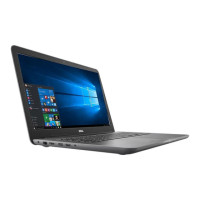


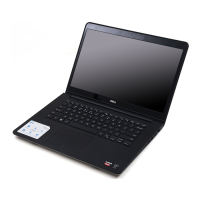
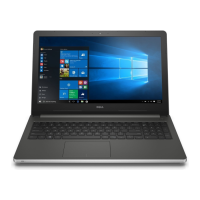
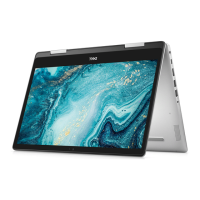
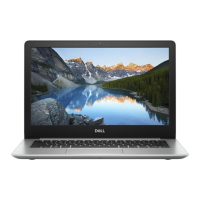
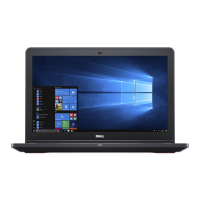
